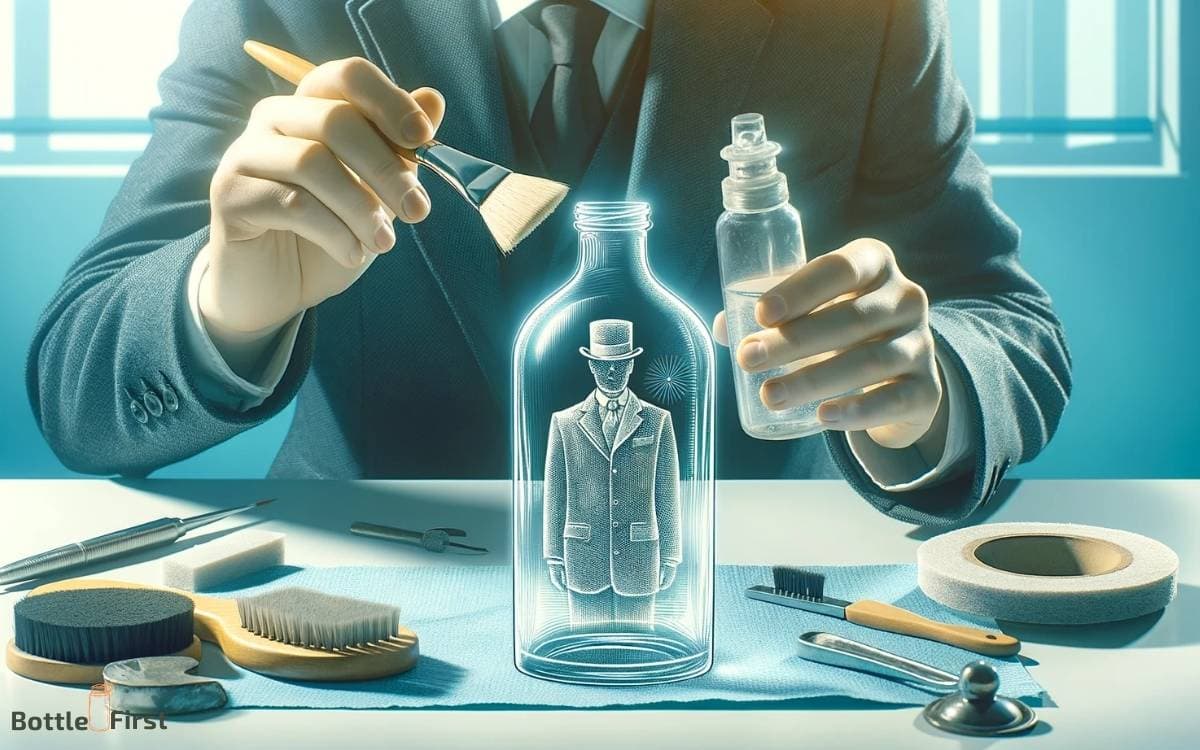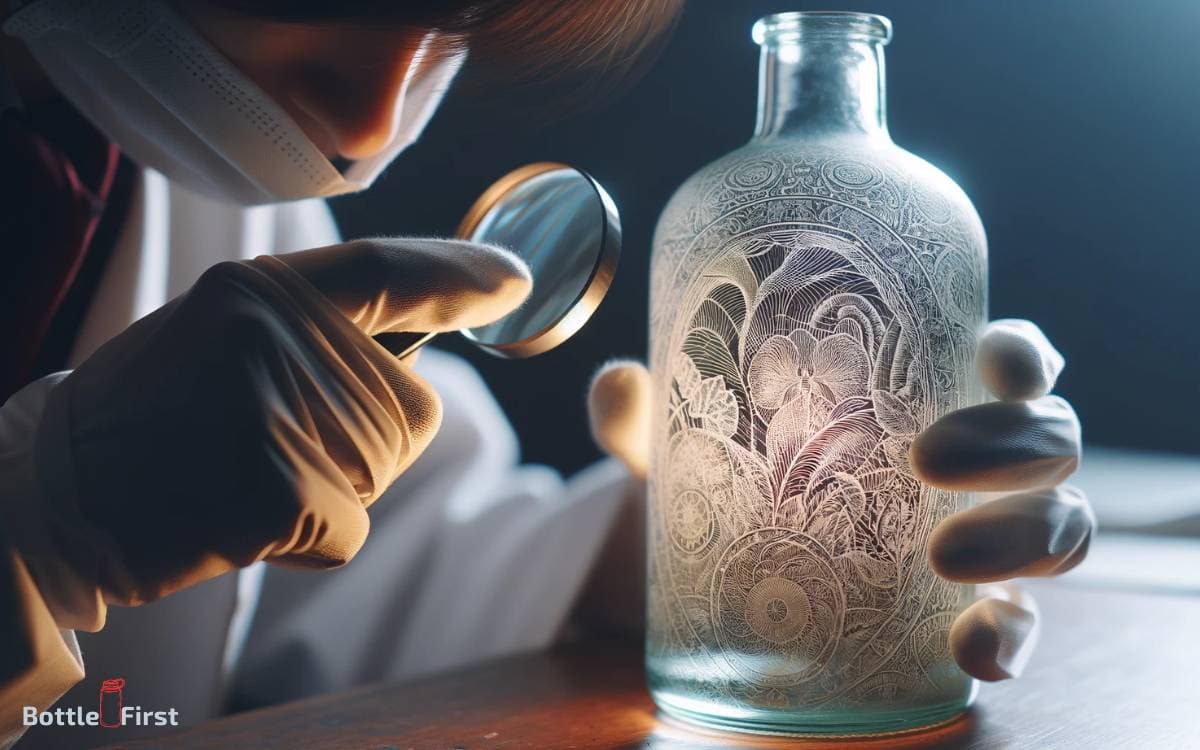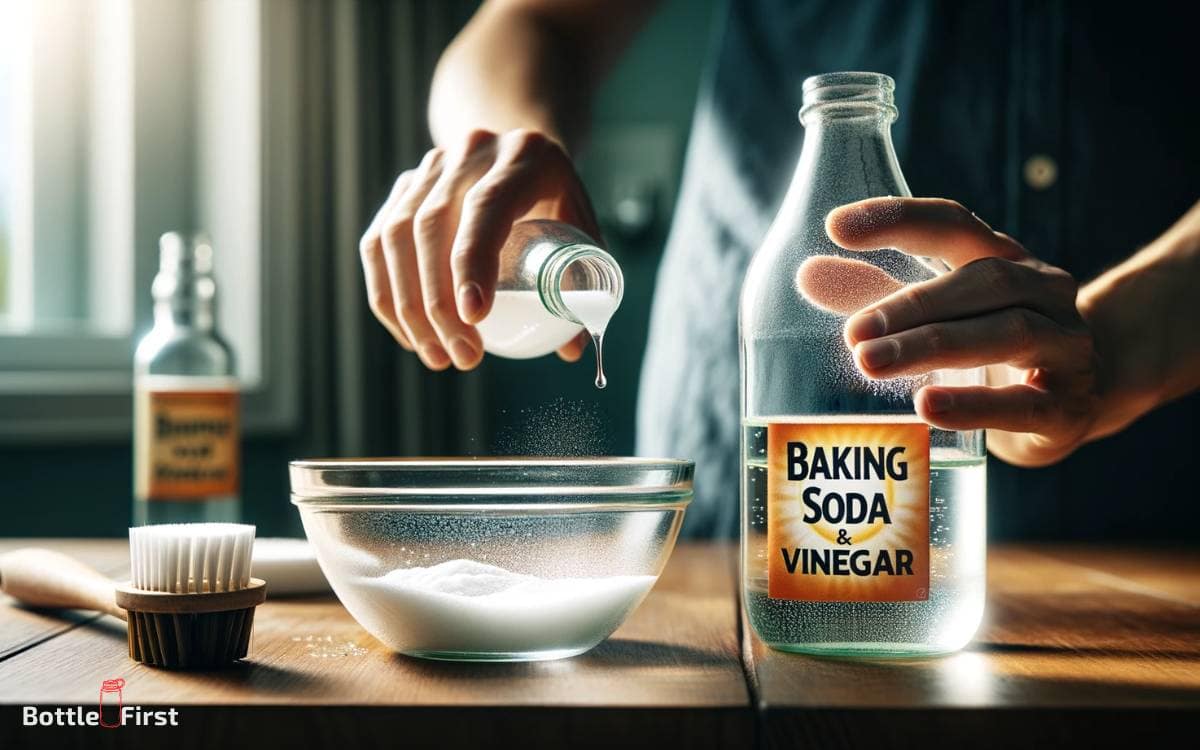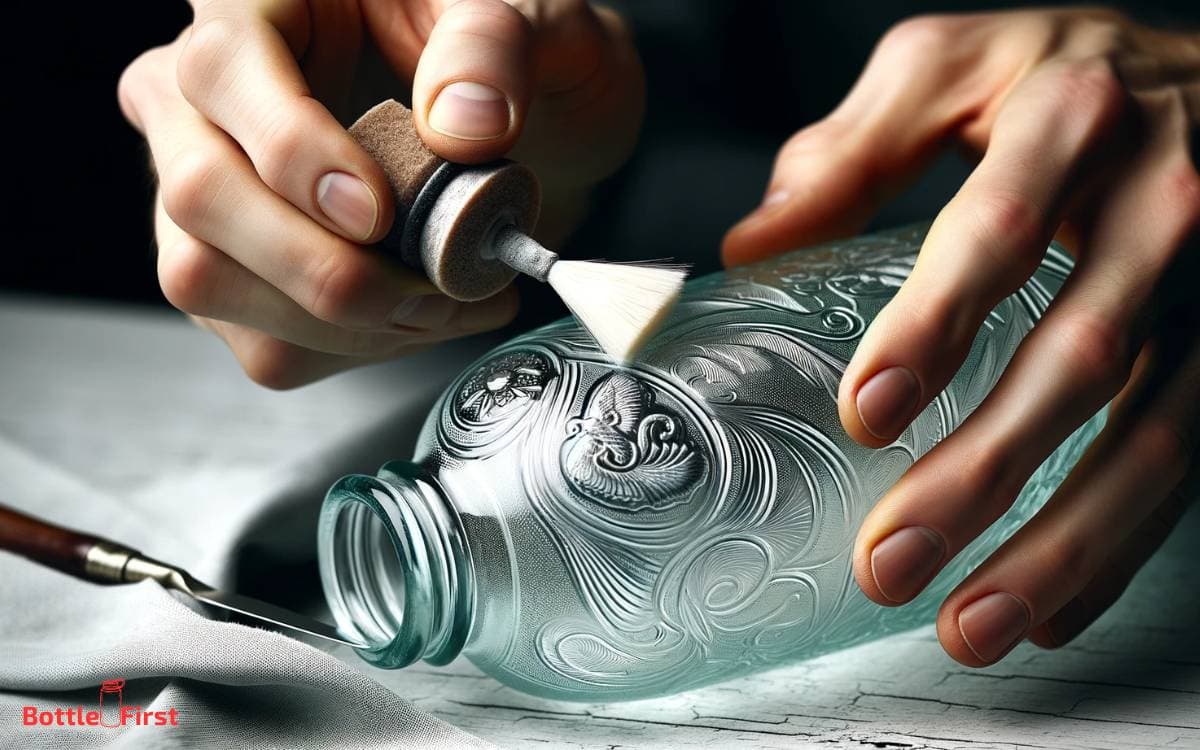How to Remove Etching from Glass Bottle? 3 Easy Methods!
To effectively remove etching from glass bottles, you can use a combination of polishing compounds like cerium oxide or a baking soda paste, alongside careful buffing techniques.
Begin by cleaning the glass with soapy water, apply your chosen substance, and gently rub in a circular motion until the etching fades. For persistent marks, professional glass repair kits may be required.
Etching on glass bottles occurs when acidic or abrasive substances come into contact with the glass surface, leaving behind a dull or frosted appearance.
Here are some quick steps:
Restore your glass bottles to their original luster by effectively removing etching with the right materials and techniques.
Key Takeaway
Materials Needed for Removing Etching
You’ll need a variety of cleaning solutions to remove etching from glass, such as vinegar, baking soda, or a commercial glass cleaner.
Additionally, having the right tools for polishing the glass, such as a microfiber cloth or a glass polishing compound, will be essential.
Don’t forget to prioritize your safety by wearing protective gear like gloves and goggles while working with these materials.
Understanding Etching on Glass Bottles
Understanding etching on glass bottles begins with recognizing the chemical reactions that cause the visible marks on the surface.
When glass comes into contact with certain substances, such as acids or abrasive materials, it undergoes a process that alters its surface, creating a frosted or cloudy appearance.
This etching occurs due to the removal of a thin layer of glass, leaving behind microscopic ridges and valleys.
Understanding these chemical and physical changes is crucial for effectively removing the etching from glass bottles.
By comprehending the nature of the marks, you can identify the most suitable materials and techniques for restoring the glass to its original, smooth state.
Cleaning Solutions Required
To remove etching from a glass bottle, gather the necessary cleaning solutions and materials. You’ll need white vinegar, baking soda, a soft cloth, and a gentle scrubbing pad.
White vinegar is an effective natural cleaner that can help dissolve and remove the etching marks. Baking soda acts as a gentle abrasive that can assist in lifting the etching without scratching the glass.
Additionally, a soft cloth is essential for applying the cleaning solutions and gently scrubbing the affected areas. A gentle scrubbing pad can also be used, but make sure it won’t scratch the glass.
With these innovative and easily accessible cleaning solutions, you can effectively restore the glass bottle to its original condition.
Tools for Polishing Glass
When removing etching from a glass bottle, the essential materials needed for polishing glass include white vinegar, baking soda, a soft cloth, and a gentle scrubbing pad.
In addition to these basic materials, you may also want to invest in a glass polishing compound and a microfiber cloth for a finer finish.
The glass polishing compound is designed to remove fine scratches and restore the glass’s clarity, while the microfiber cloth helps to achieve a streak-free shine.
For more advanced polishing, a rotary tool with a felt polishing wheel can be used to buff out stubborn etching marks. These innovative tools will help you achieve professional-grade results when polishing glass.
Protective Gear for Safety
Before starting the process, make sure to wear gloves for protecting your hands and safety goggles to shield your eyes from any potential splashes or fumes.
Safety is crucial when working with chemicals and abrasive materials. It’s essential to prioritize your well-being while removing etching from glass bottles.
Gloves will prevent any skin irritation from the cleaning agents, while safety goggles will protect your eyes from any accidental splashes or fumes that may arise during the process.
Prioritizing safety ensures a smooth and worry-free experience as you work to restore your glass bottle to its former glory.
Now that you have your protective gear in place, let’s move on to the first method of removing etching, which involves using baking soda and vinegar.
Method 1: Using Baking Soda and Vinegar
After you have gathered your materials, such as baking soda, vinegar, and a soft cloth, begin by mixing equal parts of baking soda and vinegar in a small bowl. This creates a paste that you can apply to the etched areas of the glass bottle.
Use the soft cloth to rub the paste onto the affected areas in a circular motion, applying gentle pressure. Let the paste sit on the glass for about 5-10 minutes to allow the chemical reaction to break down the etching.
After that, rinse the bottle thoroughly with warm water and dry it with a clean cloth. This method utilizes the natural cleaning properties of baking soda and vinegar to effectively remove the etching from the glass bottle, leaving it looking clear and pristine.
Method 2: Lemon Juice and Salt Solution
You can easily remove etching from glass bottles using a simple solution of lemon juice and salt.
The acidity of the lemon juice helps to break down the etched residue, while the salt acts as an abrasive scrub to lift it off the glass surface.
This method is effective and requires minimal effort, making it a great option for restoring the appearance of your glass bottles.
Lemon Juice Effectiveness
Using lemon juice and salt can be effective to remove etching from a glass bottle. This innovative method harnesses the natural acidic properties of lemon juice and the abrasive nature of salt to tackle the stubborn residue on the glass surface.
The citric acid in lemon juice helps to break down the mineral deposits causing the etching, while the granular texture of salt acts as a gentle abrasive to lift the residue.
To apply this method, mix lemon juice and salt to form a paste, then use a soft cloth or sponge to rub the mixture onto the etched area. Let it sit for a few minutes before rinsing and drying the bottle.
This technique offers a natural and creative approach to restoring the clarity of glass bottles.
Salt as Abrasive Scrub
To effectively utilize salt as an abrasive scrub in conjunction with lemon juice, continue the process by gently rubbing the salt and lemon juice paste onto the etched area using a soft cloth or sponge.
The abrasiveness of the salt, when combined with the acidity of the lemon juice, creates a powerful cleaning solution.
Here are a few reasons why this method is innovative and effective:
- The natural properties of lemon juice and salt work together to break down and lift the etched stains from the glass.
- This method provides a chemical-free and eco-friendly alternative to harsh commercial cleaning products.
- The combination of lemon juice and salt offers a refreshing and pleasant scent, unlike strong chemical cleaners.
- Using simple kitchen ingredients like salt and lemon juice showcases an innovative approach to solving everyday problems.
Method 3: Commercial Glass Polishing Compound
For removing etching from a glass bottle, consider using a commercial glass polishing compound. This method offers an innovative solution for dealing with stubborn etching marks.
These compounds are specially formulated to remove blemishes and imperfections from glass surfaces, including bottles.
To use the commercial glass polishing compound, apply a small amount to the affected area and rub it in using a soft cloth or polishing pad. Follow the specific instructions provided with the product for the best results.
The abrasive nature of the compound helps to smooth out the etched areas, restoring the glass to its original clarity. After using the compound, thoroughly wash and dry the bottle to remove any residue.
Tips for Preventing Future Etching
To prevent future etching on glass bottles, regularly rinse and dry them after each use. This simple habit can go a long way in preserving the clarity and smoothness of your glass bottles.
In addition, consider these innovative tips to further protect your glass bottles:
- Use a protective coating spray specifically designed for glass to create a barrier against etching.
- Invest in high-quality glass bottles that are less prone to etching due to their superior composition.
- Store your glass bottles away from direct sunlight or heat, as these environmental factors can contribute to etching over time.
- Avoid using abrasive cleaners or scrubbing tools that can scratch the surface of the glass and make it more susceptible to etching.
Conclusion
So, now that you’ve spent all this time removing the etching from your glass bottle, make sure to display it proudly on your shelf where no one can touch it.
That way, you can admire its smooth, flawless surface without any pesky fingerprints ruining your hard work. It’s the perfect way to appreciate the irony of all your efforts.






